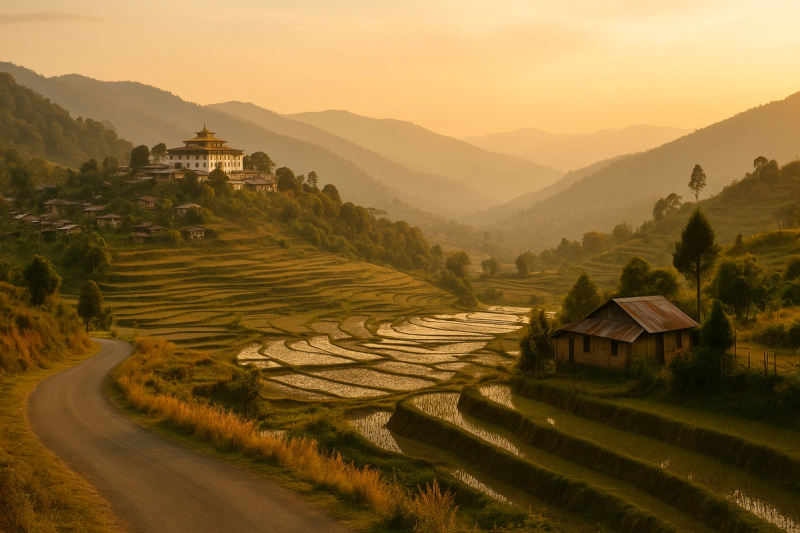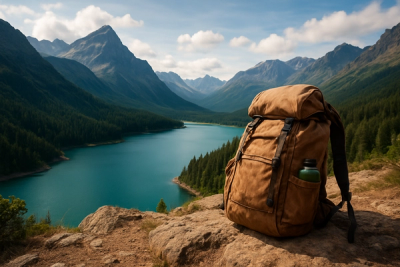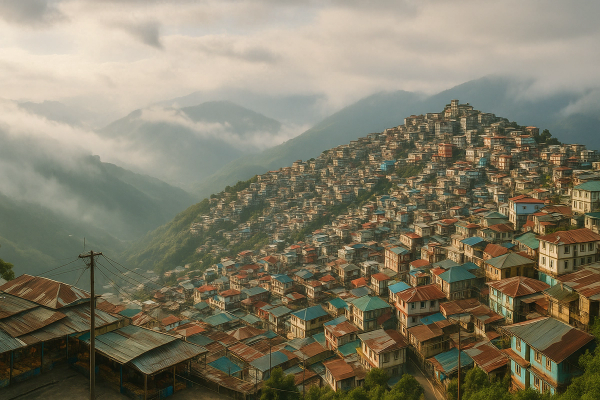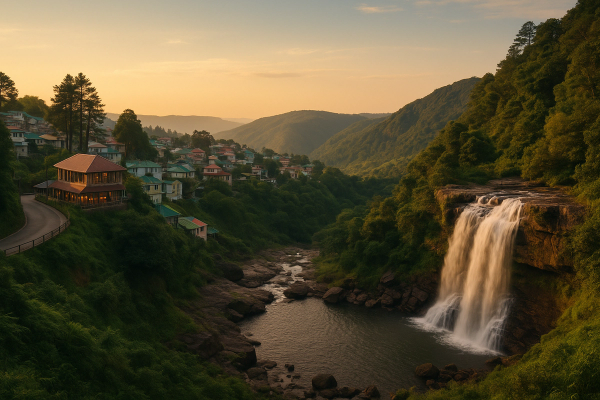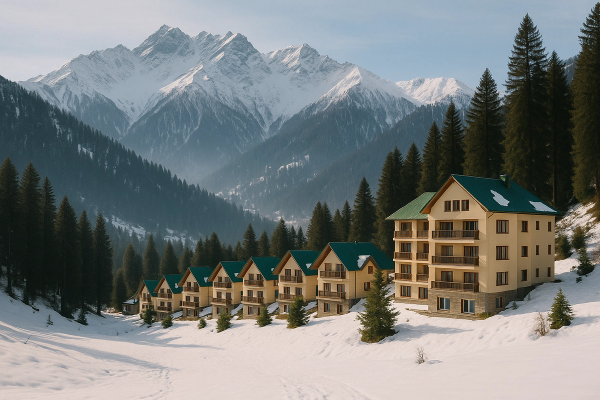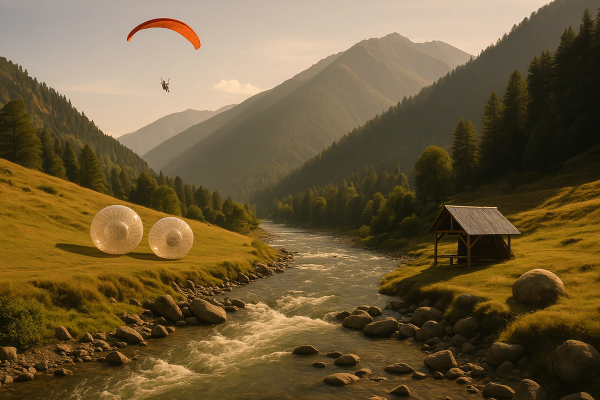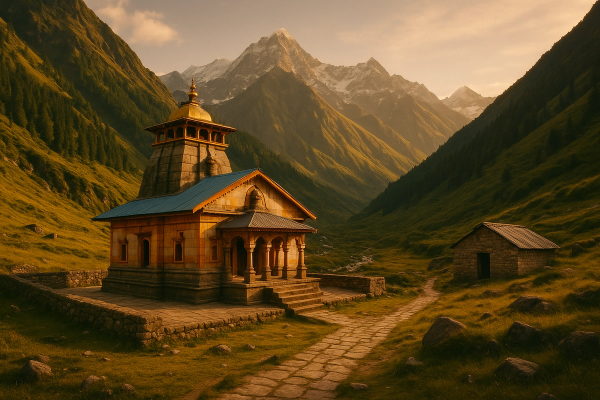10-Day Northeast India Road Trip: Seven Sisters Itinerary — Real Talk From The Road#
Um, so I finally did it. Packed my tiny hatchback, convinced two friends with questionable playlists, and we drove across the Northeast. Ten days. Assam, Meghalaya, Arunachal. A lil taste of Nagaland vibe on the side. Not the whole Seven Sisters, obviously, because unless you’re secretly a teleporting ninja, ten days is tight. But trust me, this loop gives you the mountains, the waterfalls, the rhinos, that crisp monastery silence, and chai at random dhabas where the aunty just knows you needed that extra pakora. It felt raw and real and also surprisingly organized in parts. And yeah, I’ll share exact costs, permits, best seasons, avoid-this roads, where we messed up, all of it. Because I wish someone told me half this stuff before I went.¶
Why This Trip, Why Now#
I grew up hearing “Seven Sisters” like it’s some myth. Lush, mysterious, a bit far from the usual Goa and Manali routine. But things have changed. Roads are better now on many stretches, homestays have grown like crazy, and you can get decent coffee in Shillong that isn’t just milk and sugar pretending to be a latte. Plus, with the Sela Tunnel finally operational near Tawang, those winter closures that used to kill plans are less of a headache. The region’s been welcoming travelers more openly, though you still need to respect local ways, permits, and the environment. And ya, some places have sensitive situations. We kept checking recent updates and asked locals rather than fully trusting a random Reddit thread from 2018. Heading into 2025, Northeast travel is honestly booming, but it still feels untouched if you just step a little off the main Instagram route.¶
- ILP needed for Indians in Arunachal Pradesh, Nagaland, Mizoram, and Manipur — apply online on official state portals. Carry printed copies. Meghalaya and Assam don’t need ILP.
- Best months: Oct to April. Clear skies, waterfalls still decent, roads mostly stable. Avoid heavy monsoon if you’re driving, landslides are no joke.
- Budget range: backpackers can swing 2k–3.5k INR/day. Mid-range 4.5k–8k depending on SUV, homestay type, activities.
- Connectivity: Jio and Airtel decent in towns. In hills it’s patchy. Download maps offline. UPI works in most places but carry cash for remote villages.
- Safety: Check current situation for Manipur and a few border belts. AFSPA has been reduced in many districts in recent years, but still, avoid driving late at night and follow local advice.
My 10-Day Route That Actually Worked#
Look, you can’t meaningfully do all seven states in 10 days unless you want just car selfies and sore backs. I picked a compact loop that feels like a full plate thali of the Northeast — Meghalaya’s waterfalls and living root bridges, Assam’s rhinos and tea, and then the big spiritual push to Arunachal’s Tawang. If you’re more into treks and tribal culture festivals, I’ll drop a Nagaland swap too. We started and ended in Guwahati because flights are frequent and rentals are easier. Also the food. Guwahati is underrated for food, fight me.¶
Day 1–2: Guwahati to Shillong and Sohra (Cherrapunji) — cloud theatre begins#
We landed midday and got straight on NH6. It’s roughly 3–4 hours from Guwahati to Shillong if you don’t go nuts with tea stops. Shillong is breezy, a bit hipster now, with cafes that take their music way too seriously in a good way. We stayed near Police Bazar for convenience and wandered Ward’s Lake at sunset. Next morning, early start for Sohra. Nohkalikai falls peeked through the mist like a shy giant. Mawsmai caves are touristy but fun, and if your knees are game, the Tyrna-to-Nongriat trek for the double-decker root bridge is the real deal. Go early, carry water, and avoid littering, please. A local guide isn’t mandatory but we hired one anyway — worth it for stories and shortcuts. Nights in Sohra can get foggy and magical. Our homestay had hot rice, pork curry, and a grandma insisting we take more. She won.¶
Day 3–4: Jaintia Hills — Krang Suri, Phe Phe, and the Dawki glass river scene#
Jowai side is my favourite. Krang Suri waterfall is turquoise like it’s photoshopped in real life. If you’re a water person, pack a quick-dry towel and reef-safe sunscreen. Phe Phe falls needs a short hike, not hard but watch your step after rains. We crashed in Shnongpdeng, near Dawki, in a basic riverside camp. Woke up to boats slicing through crystal clear waters — no filter needed. Morning boat ride before the crowds, then back toward Shillong or straight to Guwahati if you’re trying to compress time. Tip: the border area can get choked with weekend traffic. Also, try jadoh in a small local eatery in Shillong or Jowai — pork rice with local spices that made me cry happy tears. Vegetarian options exist, don’t worry. Meghalaya knows how to feed all kinds of eaters.¶
Day 5: Assam’s Kaziranga — rhinos, grasslands, chai in tin cups#
Kaziranga is a mood. Rolling in from Guwahati takes around 4–5 hours depending on breaks. The park usually opens Nov to April, with partial openings sometimes earlier, but check exact zones before you plan. We booked a jeep safari for the afternoon. Elephants lumbering in the distance, rhinos that somehow look gentle and prehistoric at the same time, birds like they own the place — it’s gorgeous. Stay near Kohora range if you want easy access. Early morning safaris are colder and better for sightings. If you’re a responsible traveler, skip loud music, don’t litter, don’t bug the drivers to go off track. There’s a reason these parks stay beautiful. Dinner was Assamese thali — tenga curry, khar, rice, and a simple dal that somehow tasted like a hug.¶
Day 6–8: The Tawang run — Bomdila, Dirang, Sela Tunnel, and monastery calm#
Okay, big mountain days now. From Kaziranga, we hit the road early to cross into Arunachal via Bhalukpong where they check ILP. Keep printed permits and ID handy. First halt usually Bomdila or Dirang. We chose Dirang for the apple orchards and the cute little homestays. Next morning, up to Tawang. Earlier, winter closures around Sela Pass were notorious, but with the Sela Tunnel operational, you now get more reliable access even in harsher weather. Still, conditions change, so be flexible. Tawang Monastery is massive and serene. Spend time, don’t just click and run. A day trip to Bum La Pass and Shungatser Lake is doable, but permits for Bum La are only for Indian citizens and need to be arranged in Tawang through a registered operator or the DC office. The road is bumpy but so worth it. We got lucky with a clear day — those views straight up zapped the noise in my head. Apong, the local rice brew, warmed us up back in town. Eat thukpa and momos till you need stretchy pants. No regrets.¶
Day 9: Roll down to Nameri or Tezpur — buffer day that saves your sanity#
After mountains, you’ll want an easier day. We drove down to Nameri National Park side and did a chilled river rafting session the next morning — more like a drift with birdwatching than full-on rapids. If you’re tired, just park yourself in Tezpur with tea and sweets and call it recovery. These buffer days are gold because Northeast roads will surprise you. A minor landslide, a festival, a random herd of goats, and your timings just move. We never planned long night drives. Mountain roads in the dark are not it.¶
Day 10: Back to Guwahati — last-minute food missions and fly out#
Guwahati has some legit food scenes now. If you have time, swing by Fancy Bazaar for snacks, or Uzan Bazaar cafes for a lazy coffee with river views. Brahmaputra sunsets do that dramatic thing where your heart goes soft. If you want one last wildlife punch, Pobitora for rhinos is closer to Guwahati than Kaziranga, though smaller. We just ate too much and bought tea to pretend we’re sophisticated back home. Flight out with legs sore but hearts fully loaded.¶
Alternate Plan: Swap Tawang for Nagaland + Dzukou Valley if Treks and Culture Pull You More#
If high-altitude drives scare you or permits feel like too much, do this instead. After Kaziranga, head to Kohima. Permits for Nagaland are ILP as well, available online. Visit the World War II cemetery, stroll the cafes that hide behind random lanes, then plan Dzukou Valley trek from Viswema or Jakhama. It’s a 5–6 hour trek depending on fitness. The valley is like a green bowl with clouds chilling on the rim. In winter, it’s stark and beautiful. If your dates match, the Hornbill Festival in early December is a whole vibe — music, food, tribes showcasing culture at Kisama Heritage Village. Book months in advance for stays. I once met a couple who booked late and ended up sleeping in a car. Not romantic. Not warm. But a memory, I guess.¶
Permits, Practicalities, and Those Small Things That Trip People Up#
ILP basics: Indians need ILP for Arunachal, Nagaland, Mizoram, and Manipur. Apply online on the official state portals a few days in advance. It’s a nominal fee and usually quick, but sometimes it glitches. Keep printouts and IDs. Bum La permits are separate and handled locally in Tawang for Indian nationals. Foreign travelers need Protected Area Permits for some regions — check official advisories before booking. No drones near borders or army areas, common sense but folks forget. Fuel is widely available on main highways, but keep the tank happy in hills. Petrl in the 100-ish range per litre depending on the place. EVs are coming up — Guwahati and Shillong have a few fast chargers now, but network is still sparse in deep interiors, plan accordingly. Oh and plastic bans are stricter in parts of Meghalaya, especially around living root bridges, so bring reusable bottles and bags. Dzukou and other treks have simple shelters, not fancy. Cold nights. Pack layers.¶
Where We Stayed and What It Cost Us#
Accommodation’s changed a lot. Earlier it was either fancy resort or shady place. Now, homestays are everywhere and honestly the best way to actually feel the place. We paid around 1500–2500 INR per night for clean homestays in Meghalaya with breakfast. In Tawang and Dirang, 1800–3500 for a warm room with hot water and local food options. Shillong can go higher, especially on weekends, 3000–6000 for mid-range hotels near the center. Kaziranga resorts vary wildly — we found a sweet spot at 3000 for a mid-range place that arranged safaris. If you’re backpacking, dorms exist in Shillong, Guwahati, sometimes Kohima, 600–1000 per bed. During big festivals like Hornbill or Ziro Festival of Music, prices spike and places fill up weeks in advance. Just book early. Nothing fancy about that advice, it’s just what it is.¶
How We Got Around — Car vs Bike vs Local Taxi#
We drove our own small car out of Guwahati. It did fine, but for Arunachal I’d recommend at least a sturdy hatchback or an SUV if you can stretch it. Self-drive rentals are available in Guwahati and sometimes Shillong, but stock is limited and weekends get wiped. Bikes are a vibe — 150cc to 350cc usually 1000–1800 INR per day in Shillong or Guwahati. Wear proper riding gear. Rain comes out of nowhere. If you don’t want the stress, hire a local driver with a Bolero or Innova for 3500–5500 per day plus fuel depending on terrain. Honestly, the drivers double up as storytellers and problem solvers. Our guy in Arunachal knew exactly which chai stall had clean loos. You can’t put a price on that. Buses and shared Sumos exist on many routes — cheap and reliable, but timings are, how to say, philosophical. Fine if you’re flexible.¶
Seasonal Tips and What To Pack#
Oct to April is your best bet. In winter, Tawang gets frigid. Nights dip below zero. Pack thermals, proper jacket, gloves. Meghalaya stays pleasant, sometimes misty and romantic and also wet, so keep a light rain jacket year round. Good shoes are non-negotiable for root bridges and waterfall trails. Sunscreen, cap, sunglasses — the works. Power cuts do happen, so a small power bank and a torch help. Download offline maps, and keep a physical copy if you can. Many waterfalls and popular spots have basic facilities, not malls, so don’t expect fancy changing rooms. Also, toss in some motion sickness meds for twisty roads. Don’t be a hero. I forgot mine on day one and basically stared at a plastic bag for an hour in the back seat. Not my finest moment.¶
Food You Honestly Shouldn’t Skip#
Assamese thali with tenga maas and khar. Pork jadoh in Meghalaya. Smoked pork with axone in Nagaland if you swing that way. In Arunachal, thukpa, momos, and apong, the rice brew that makes evenings warmer. In Manipur, if you ever extend your trip, eromba and black rice kheer are musts. Also, bamboo shoot dishes are everywhere in different styles. Vegetarians get enough local greens and simple plates, don’t worry, plus North East cafes bake like champs. Please try local instead of hunting for paneer butter masala everywhere. And, yaar, be polite with spice preferences. If aunty says this chutney is sharp, believe her. My tongue went numb for a bit and I still asked for more because I am who I am.¶
Safety, Updates, and What’s Changing On Ground#
Travel in the Northeast feels safer than the outside world imagines, but it’s not one single block. It’s seven states with hundreds of communities and unique stories. You’ll hear about AFSPA getting reduced in many areas, which has improved the vibe and tourism. Still, certain districts see tensions once in a while, especially pockets of Manipur and a few border regions. Check local news, talk to your homestay owner, and avoid late-night road trips. During heavy monsoon, landslides in Meghalaya and Arunachal are common. Sela Tunnel has improved Tawang access, but mountain weather can flip fast. Network may vanish for hours. Keep family informed when you go off-grid. Respect checkpoints. Don’t argue with jawans or the volunteers managing village traffic at popular waterfalls. We’ve noticed more eco-rules at living root bridges and popular caves — stick to them or the fines hurt. And karma too, if you believe in that stuff.¶
Money, Realistic Budgets, and Tiny Costs That Add Up#
UPI is king in cities and bigger towns, but we carried 5–10k cash as backup for remote areas. Homestays often prefer cash. Daily spend per person on our trip averaged around 3500–4500 including stays, food, fuel split, and permits, because we didn’t pinch too hard. Backpackers can bring it to 2000–3000 if dorms and local buses are your thing. Safaris in Kaziranga cost extra. Bum La trips add to the budget since you usually book a local vehicle. Entry tickets for waterfalls, caves, parks are mostly light — 20 to 200 type — but five spots a day and suddenly you’re like where did my money go. Fuel was our biggest line item after stays. Small jugaad here and there helped, like grabbing bakery snacks for car munchies so we didn’t stop every 40 minutes pretending to be hungry.¶
Mistakes We Made So You Don’t Have To#
We didn’t buffer enough time for Nongriat. The climb back is a quad killer. Should’ve stayed an extra night in Sohra. We also underestimated how early it gets dark in the hills, so a couple of days we arrived later than planned and missed sunset points by like ten minutes. Painful. One of us didn’t carry a proper jacket to Tawang because he thought he’s tough. He was not. Another classic — forgetting ILP printouts and then scrambling for a photocopy shop at the border. Do not be us. Also, booking Bum La permits after arrival meant we pushed everything by half a day. Better to plan it on day one in Tawang itself. Lastly, me and him packed too many clothes and still wore the same three layers on rotation. Carry less, wash more. Your back will thank you.¶
If you’re patient on these roads, the Northeast rewards you. If you rush, it’ll punish you with missed moments. Simple as that.
Lesser-Known Bits That Made It Special#
A tea stall past Umiam where the aunty gave us warm puffed rice with a secret masala. A quiet stretch in Dirang where we watched stars that looked like they’d fall on our heads. Krang Suri at 7 am before the crowd — mirror water, just us and a sleepy caretaker. A monk in Tawang who offered us butter tea and a tiny smile that basically healed childhood trauma. Unakoti’s not on this route, but if you stretch toward Tripura some other time, those rock carvings are insane. Majuli island in Assam too — satras and slow life — is perfect if you swap Kaziranga or add a day. The point is, don’t chase only what your explore page shows. Ask locals, be polite, and you’ll recieve more kindness than you thought possible on a road trip.¶
Final Thoughts — Will I Go Back?#
Absolutely. I didn’t even cover half the stories. I want to do Ziro during the music festival, maybe catch the Shillong Autumn vibe again, and sit by Dawki once more when it’s just quiet. When people ask me if Northeast is worth the hype, I kinda laugh. Hype is a small word for it. It’s wild and gentle and sometimes confusing. It doesn’t hold your hand, and that’s the beauty. Plan well, respect rules, talk to people, and leave places cleaner than you found them. You’ll come back with a full heart and dusty shoes. If you want more itineraries or real-world tips from desi travelers who don’t talk like brochures, check out AllBlogs.in — I lurk there a lot when I’m plotting my next escape.¶

